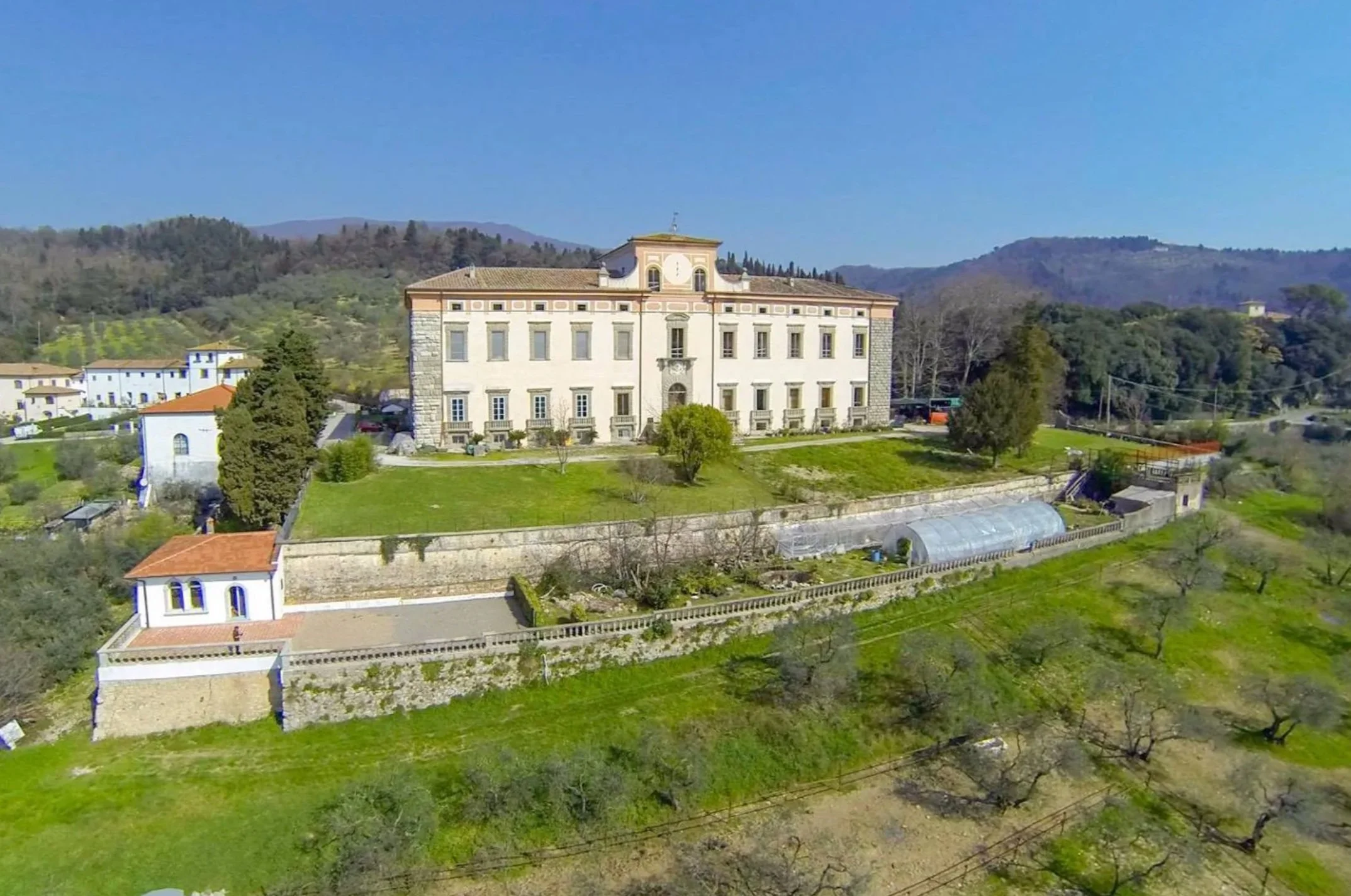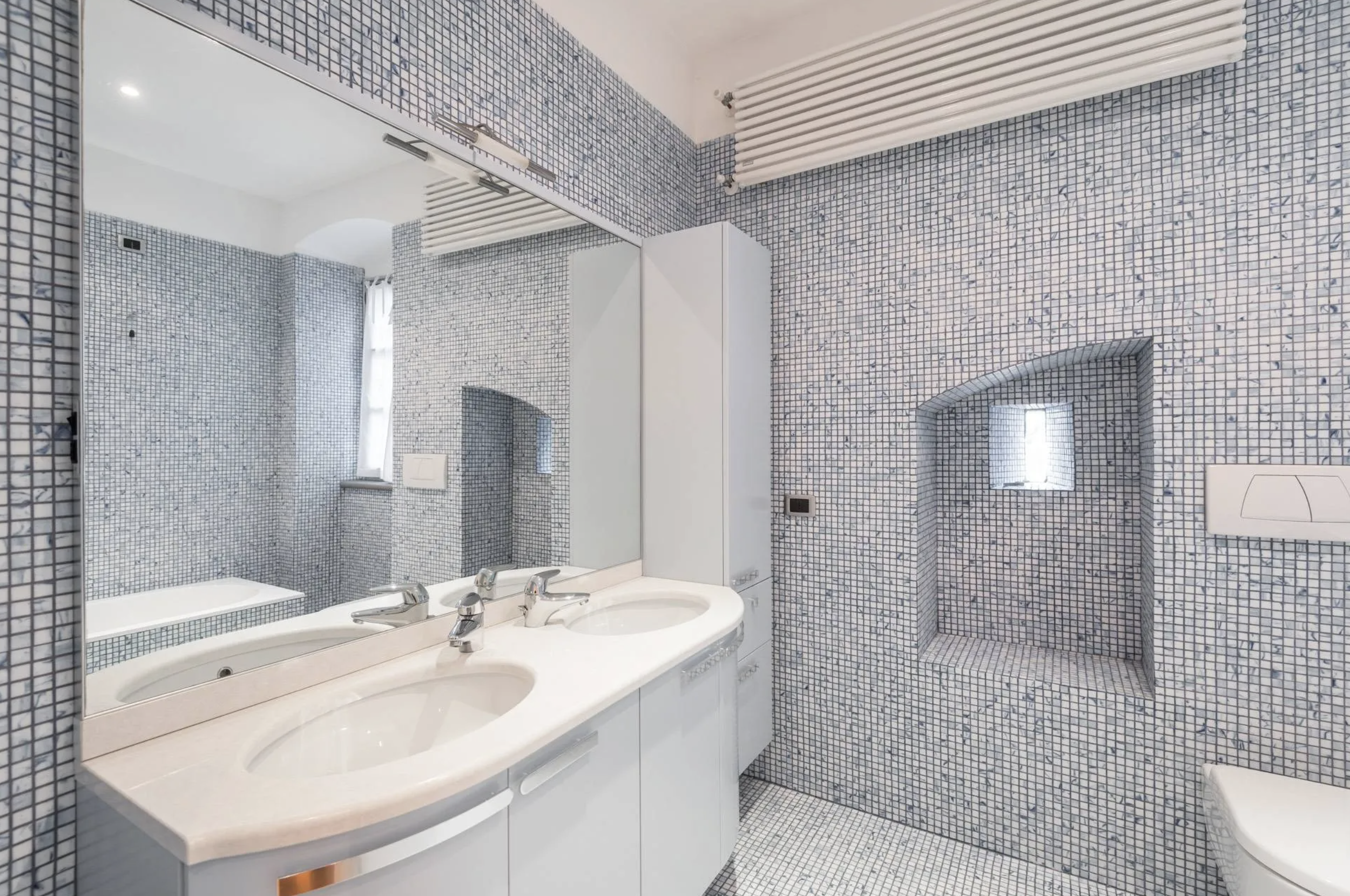Historic Italian Villa in the Tuscan Countryside North of Florence
Nestled in the Tuscan countryside near Montemurlo, this 16th century villa awaits the next chapter in history.
The story of this villa begins in the 15th century when the land belonged to the influential Valori family of Florence.
The Valori family steadily expanded their holdings, reflecting their rising status within Florentine society.
By around 1530, Bartolomeo di Filippo Valori took the bold step of building the villa practically from scratch, creating a structure that was unusually monumental for the Florentine territory.
This grand design was intended to serve a primarily representative function, a testament to the family's power and influence.
The villa's grandeur did not go unnoticed. Benedetto Varchi described it as a "more than royal villa," a sentiment echoed by Giorgio Vasari the Younger, who, in 1598, included a plan of the villa among the most important buildings of his time.
The building itself reflected the extraordinary success of the Valori family at the Medici court, particularly under Popes Leo X and Clement VII.
Their fortunes were further elevated by their involvement in the siege of Florence, after which Baccio Valori was appointed governor of the recaptured city.
In 1546, the estate passed to the Panciatichi family, who initiated early reconstruction efforts. By 1557, it became the residence of Giovan Girolamo de' Rossi, the bishop of Pavia and former governor of Rome. The Rossi family maintained ownership until 1693, when Francesco Tempi acquired the villa, elevating it to a marquisate in 1714.
Under the Tempi family, significant modernization took place, including architectural enhancements by Anton Maria Ferri and garden redesigns by Alessandro Saller. The villa remained in the Tempi family until 1770, when it passed to Ferdinando Marzi-Medici, who adopted the Tempi name to retain the marquisate.
In 1847, the villa was inherited by Maria Ottavia Vettori Guerrini, a cultured figure linked to the Macchiaiolo painter Cristiano Banti. However, by the late 1930s, the villa had fallen into disrepair under the Coppedè family, suffering from structural issues, theft, and vandalism.
The villa's revival began in the 21st century when a notable family of industrialists from Prato purchased and restored the estate.
Today, this 16th-century villa remains a stunning example of Renaissance architecture, preserved with care and attention to detail.
The large "U" shaped structure, with its grand façade framed by two ashlar bands, continues to impress visitors with its elegant symmetry.
The interiors, featuring late Baroque stucco work, neoclassical decorations, and rooms adorned with frescoes, evoke the splendor of a bygone era.
Surrounded by a romantic park with the remnants of an 18th-century nymphaeum and neo-Egyptian elements, the villa offers a serene retreat in the heart of Tuscany.
With approximately 30 bedrooms, 40 bathrooms, and expansive grounds, the estate is as versatile as it is beautiful, ready to be adapted for a variety of uses.
Recent restoration work has ensured that the villa's historic charm is preserved, along with structural reinforcements and a new roof.
Whether as a private residence or a prestigious venue, this villa offers a timeless elegance that is truly unmatched.
All photos belong to the listing agency.


































